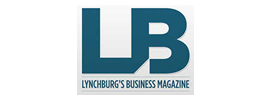In most accidents, the person who was at fault stays at the scene of the wreck. He waits for an officer to come to investigate and to take a report. When a person leaves the scene of a wreck, we call that a hit-and-run accident.

In the last few months, negligent drivers fled the scene to avoid being caught in two car accidents. For the first case, the victim asked some friends and family and found out who the negligent driver was. And the second case, the victim died and the police are still looking for the negligent driver.
But this isn’t just a problem for two people that have recently had this problem. In 2015, according to the Virginia Department of Motor Vehicles, there were 125,800 crashes in Virginia. Of that number, the DMV reports that just under 35% result in injury or death and 4,214 drivers fled the scene after the wreck. This is a significant number of hit and run accidents.
These hit and run accidents, as they are commonly called, consist of wrecks involving property or other people. Speaking in terms of percentages, these are just over 3% of the total crashes in Virginia. If they were injured in one of these hit and run accidents, they still have a case.
1. Hit and run accidents are covered by your insurance policy
In Virginia, every insurance policy is required, absent a waiver, to provide you with uninsured motorist coverage up to the limits of liability on your policy. If you are unable to locate the negligent driver, you can bring suit against a fictitious person named John Doe.
In a John Doe case, your car insurance will stand in the shoes of the unknown negligent driver and represent that unknown person against you. If your case proceeds to trial, then your car insurance company will pay the judgment up to the limits on your policy.
2. Making an uninsured motorist claim should not increase your premiums
Many people are afraid to make a claim against their own car insurance. The reason is they don’t want their premiums to increase. This is a legitimate concern. However, it is one that we can deal with if necessary.
Your car insurance premium should only increase if you make a claim on your insurance policy for an accident where you were at fault. If you were not at fault, then the law does not allow your insurance company to increase your premium.
“If you feel that your premium has been increased because of an accident that was not your fault, you may ask the Bureau of Insurance to review the premium increase due to the accident.”
Auto Insurance Consumers Guide.
If you need help making your case to the Virginia Bureau of Insurance, we’d be happy to help.
Conclusion
You still have a case even though you were hit by someone who fled the scene. The case is a little bit more unique than every other case and you have to sue a fictitious person. Your car insurance covers the judgment. This is another reason why you should review your personal auto policy limits to make sure you are covered in the event you are injured in a hit and run.
Contact us for a Free Strategy Session today!







